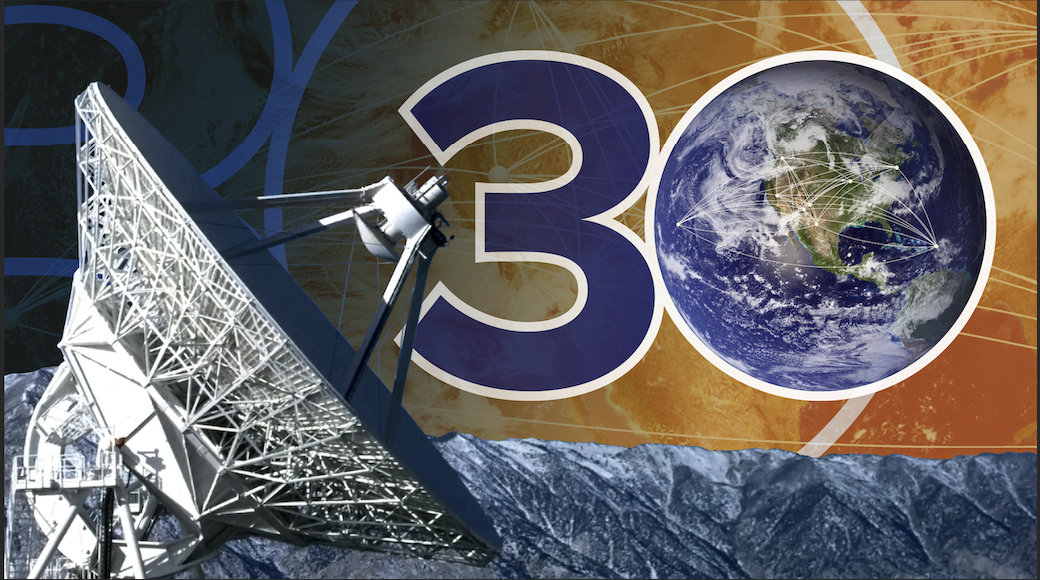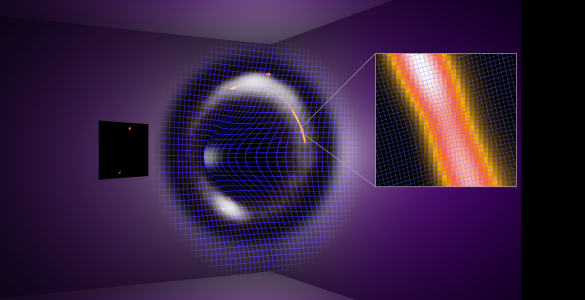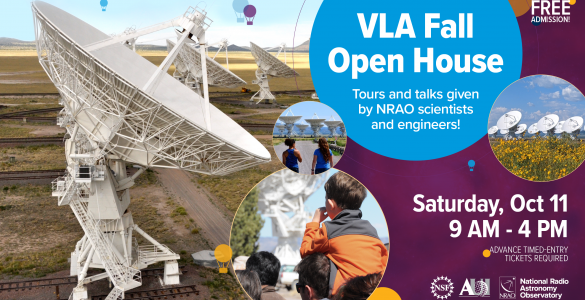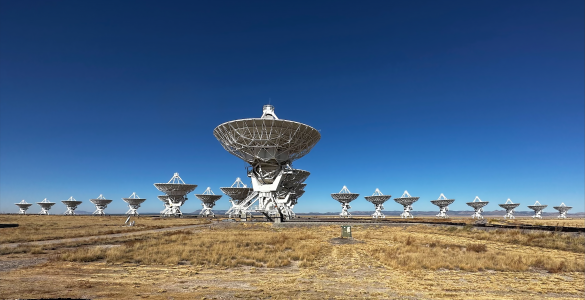On August 20, 2023, the National Radio Astronomy Observatory (NRAO) marked 30 years since the National Science Foundation’s Very Long Baseline Array (VLBA) had its inauguration ceremony in the high desert of New Mexico. In the three decades since, the VLBA has become not only one of the world’s most famous radio telescopes, but has also played a key role in radio astronomy across the country and the world.
The VLBA is a critical tool for astronomy, where knowing distances is the basis for figuring out the mass, makeup, and movement of cosmic objects. High-precision observations are the VLBA’s greatest strength. With the VLBA’s accuracy, astronomers:
- Measure the spins and shapes of galaxies, including our Milky Way
- Collect cosmological distances to measure Dark Energy in the Universe
- Trace the movements of black holes and pulsars to learn their history and future
- Predict if and when galaxies will collide, including the Andromeda Galaxy with our Milky Way
- Provide the most accurate distances to stars
- Pinpoint the exact centers of planets in our Solar System
- Develop the celestial reference grid used by other telescopes
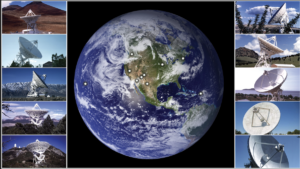
In addition to these research contributions, the VLBA is utilized by the United States Naval Observatory (USNO). The USNO is a 50% funding partner with the NSF to operate the VLBA. The USNO makes use of VLBA data to develop and maintain the International Celestial Reference Frame which is used by all astronomers across the globe to define coordinates of the objects they study. The VLBA is the majority contributor of data to these reference frames.
The VLBA stations are located in areas with limited radio interference, and widely spread across the country. The distance between any two stations is known as their baseline. The longer the baseline, the better the angular resolution. The most widely separated antennas are at Mauna Kea in Hawaii and St. Croix in the U.S. Virgin Islands, which are 8,611 km apart. While each VLBA antenna is identical, each location is unique. With antennas located from New Hampshire to Washington, from Iowa to Hawaii, and within New Mexico in Los Alamos and Pie Town, the VLBA is truly America’s telescope.
The work of the VLBA is far from over. When asked about what’s to come for the VLBA, former VLBA Director and Deputy Assistant Director for VLBA Development Walter Brisken stated, “As new technology emerges, the VLBA’s capabilities continue to grow, and it remains an innovative instrument for radio astronomy.”
###
You can access more information about the VLBA HERE
About NRAO
The National Radio Astronomy Observatory (NRAO) is a facility of the National Science Foundation (NSF), operated under cooperative agreement by Associated Universities, Inc. Furthering NSF’s mission to advance the progress of science, the NRAO enables research into the Universe at radio wavelengths and provides world-class telescopes, instrumentation, and expertise to the scientific community. NRAO’s mission includes a commitment to broader, equitable, inclusive participation in science and engineering, training the next generation of scientists and engineers, and promoting astronomy to foster a more scientifically literate society. NRAO operates three research facilities: the Atacama Large Millimeter/submillimeter Array (ALMA), the Karl G. Jansky Very Large Array (VLA), and the Very Long Baseline Array (VLBA), which are available for use by scientists from around the globe, regardless of institutional or national affiliation. NRAO welcomes applicants who bring diverse and innovative dimensions to the Observatory and to the field of radio astronomy. For more information about NRAO, go to National Radio Astronomy Observatory .
About USNO
The United States Naval Observatory (USNO) is a scientific and operational facility that produces positioning, navigation, and timekeeping data for the United States Navy and the United States government. Established in 1830 as the Depot of Charts and Instruments, it is one of the oldest scientific agencies in the United States and remains the country’s leading authority for astronomical and timing data for all purposes.
Media Contact:
Jill Malusky
Public Information & News Manager, NRAO
304-460-5608
jmalusky@nrao.edu
Geoff Chester
USNO Public Affairs Officer
geoffrey.r.chester.civ@us.navy.mil






